There’s something undeniably cozy about a warm bowl of golden curry—its rich aroma, creamy texture, and bold spices make it a go-to dish for anyone craving comfort. This flavorful classic has become a favorite in plant-based kitchens thanks to its versatility and satisfying depth.
In this easy-to-follow golden curry recipe guide, we’re diving into the world of vegan comfort food with a plant-powered twist. Whether you’re a longtime fan of plant-based curry or trying it for the first time, you’ll love how simple and delicious this dish can be.
From hearty tofu and veggie combos to spicy lentil stews, you’ll discover 10 comforting vegan golden curry variations that are perfect for weeknight dinners, meal prep, or just curling up with a cozy bowl. For more plant-based inspiration, check out our collection of vegan recipes to keep your kitchen buzzing with flavor.
What Is Golden Curry?
Golden curry is a popular variation of Japanese curry, known for its rich, mildly spicy flavor and thick, stew-like consistency. Unlike Indian or Thai curries that often rely on coconut milk or a variety of bold spices, Japanese golden curry is typically made using a curry roux—a blend of flour, oil, and spices that forms the base of the dish. This creates a smooth, comforting texture that makes it a staple in Japanese home cooking.
One of the most widely recognized brands behind this style is S&B Golden Curry, which has helped bring the dish international recognition. The brand’s iconic curry blocks are sold in various heat levels, from mild to hot, and are easy to use, making them a convenient option for both beginners and seasoned cooks.
However, if you’re following a plant-based diet, it’s important to note that not all standard curry blocks are vegan. Many commercial versions contain animal-derived ingredients such as beef extract, milk powder, or chicken fat. If you’re aiming to keep your golden curry recipe entirely plant-based, look for explicitly labeled vegan curry roux or consider making your own using a mix of plant-based butter, flour, and spices. For a sweet treat to pair with your curry night, try this vegan peanut butter brownies recipe for a delightful dessert.
This simple substitution ensures that your golden curry sauce remains both flavorful and fully vegan—perfect for anyone craving a hearty and wholesome plant-based curry without compromising on taste.
Is Golden Curry Vegan?
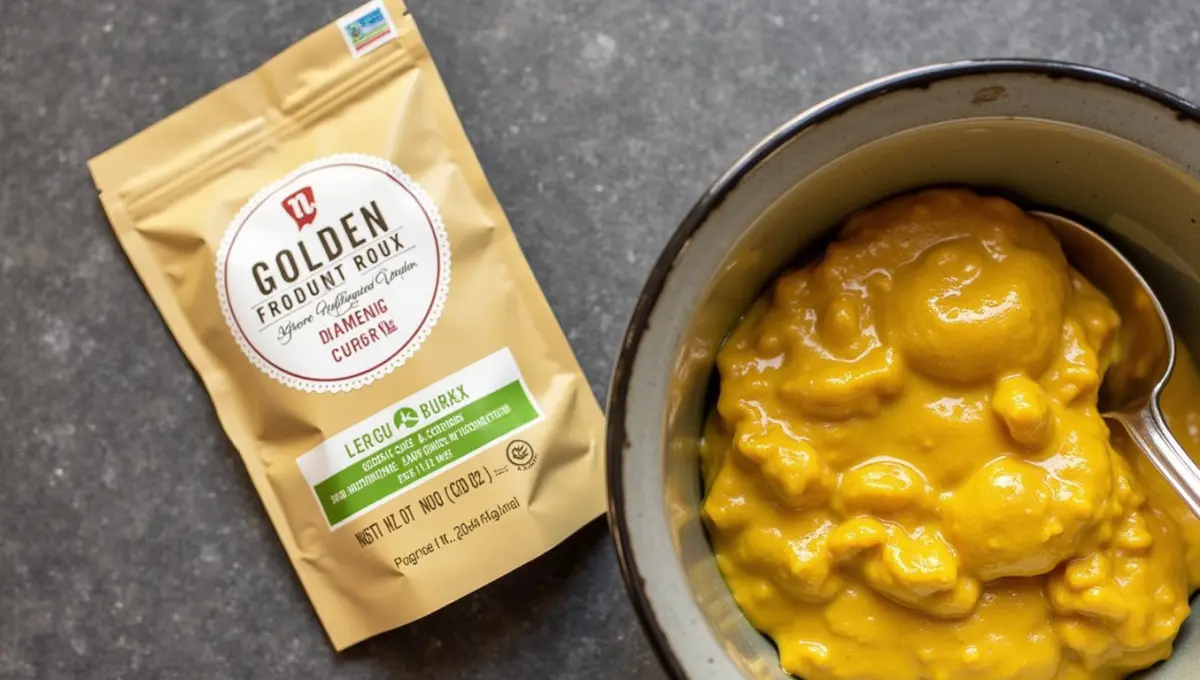
If you’re wondering, is golden curry vegan?, the answer depends largely on the type of curry roux you use. While golden curry is easy to adapt to a plant-based diet, many pre-packaged curry blocks, especially those from popular brands like S&B, often contain hidden animal-derived ingredients.
Typical curry blocks may include components such as beef or chicken extract, milk powder, whey, or other dairy-based additives. These ingredients help create the rich texture and umami flavor that Japanese curry is known for, but they can be problematic for those following a vegan or dairy-free lifestyle.
To keep your golden curry recipe vegan-friendly, it’s essential to check labels carefully. Look specifically for a vegan golden curry block, which excludes all animal products. A few specialty or organic brands now offer certified dairy-free curry roux options made with plant-based fats and natural flavor enhancers like miso or nutritional yeast.
Another great alternative is making your own curry roux at home. This allows you to control every ingredient and tailor the flavor to your liking. All you need is a combination of plant-based butter or oil, flour, and a blend of spices such as turmeric, cumin, coriander, and curry powder. For added depth, consider adding vegan bouillon or soy sauce to replicate the umami richness of traditional curry blocks. If you love experimenting with sauces, you might enjoy this vegan bang bang sauce recipe to spice up other dishes.
Whether you choose a store-bought vegan block or go the homemade route, adapting golden curry to fit a plant-based lifestyle is simple and just as satisfying.
Key Ingredients for Vegan Golden Curry
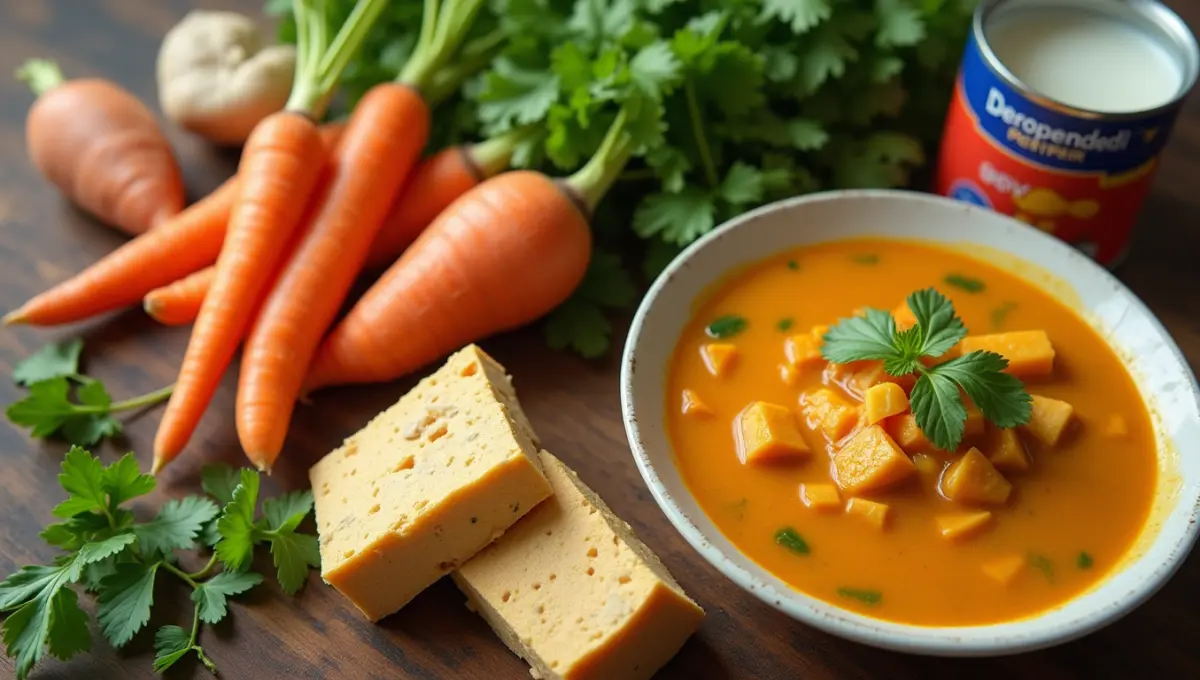
Creating a flavorful and satisfying golden curry starts with the right combination of wholesome, plant-based ingredients. A well-balanced vegan golden curry is both nourishing and comforting, making it a perfect addition to your weeknight meal rotation.
Here are the essential ingredients you’ll need for a delicious plant-based curry recipe:
Tofu or tempeh – These protein-rich ingredients absorb the curry sauce beautifully and provide a hearty bite.
Chickpeas – A great source of plant-based protein and fiber, chickpeas pair well with the spices in golden curry. For another chickpea-based dish, try this vegan taco dip recipe for your next gathering.
Sweet potatoes – Their natural sweetness balances the savory curry roux and adds depth to the dish. If you’re a fan of sweet potatoes, check out this vegan sweet potato cornbread recipe for a cozy side.
Carrots – Sliced or diced, carrots bring both crunch and sweetness, making the curry more satisfying.
Onions and garlic – These are the aromatic base that sets the flavor foundation of your vegan golden curry ingredients.
Coconut milk – It creates a creamy, rich texture that enhances the mild heat of the curry while keeping the recipe dairy-free.
Vegetable broth or vegan bouillon – For extra umami flavor and to help simmer the ingredients into a hearty stew.
Peas, bell peppers, or spinach (optional) – These vegetables add color, texture, and extra nutrients.
In terms of kitchen tools, several appliances can make preparing golden curry even easier:
Instant Pot – Great for quickly cooking all the ingredients together and developing deep flavors in less time. Consider using an Instant Pot to streamline your curry-making process.
Dutch oven – Ideal for slow simmering and creating a thick, hearty curry on the stovetop.
Rice cooker – Perfect for preparing fluffy white or brown rice to serve alongside your curry.
With these core ingredients and tools, your plant-based curry recipe will come together smoothly, resulting in a comforting, flavorful dish that’s fully vegan and incredibly satisfying.
How to Make Vegan Golden Curry
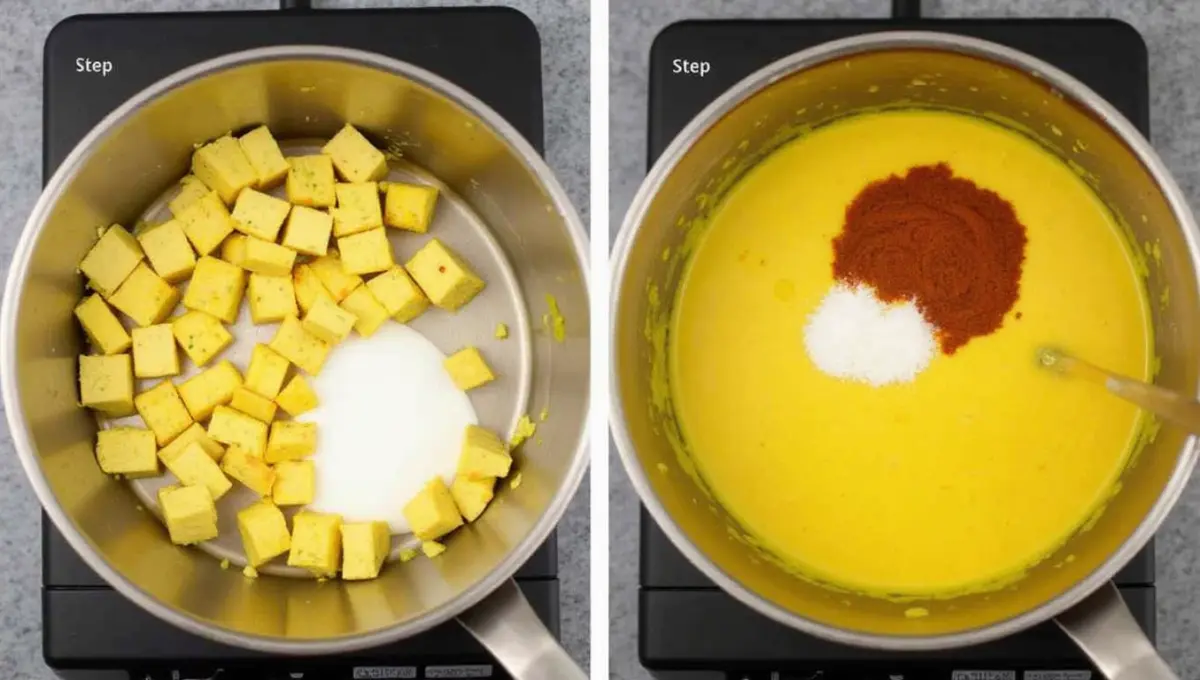
Learning how to make golden curry vegan is simple, especially when you use wholesome ingredients and follow a clear step-by-step process. This method creates a rich, flavorful dish that’s perfect for any night of the week. Whether you’re cooking on the stovetop, in a Dutch oven, or using an Instant Pot, the steps are mostly the same and easy to follow.
Here’s how to make a delicious and easy vegan curry using golden curry flavors:
Prep your ingredients: Chop onions, garlic, carrots, sweet potatoes, and any additional vegetables you’d like to use. Cube the tofu or drain and rinse the chickpeas.
Sauté aromatics: In a large pot or Dutch oven, heat a tablespoon of oil and sauté the onions until translucent. Add garlic and cook for another minute until fragrant.
Add vegetables and protein: Stir in the sweet potatoes, carrots, tofu or chickpeas. Cook for 3 to 5 minutes to slightly brown the edges.
Pour in coconut milk and broth: Add a can of full-fat coconut milk along with about one cup of vegetable broth or water. Stir to combine.
Add curry roux or spices: If you’re using a vegan golden curry block, break it into pieces and stir it in until melted. If making your own roux, add your homemade mixture now and stir to dissolve fully.
Simmer: Let everything cook on medium-low heat for 20 to 30 minutes, or until the vegetables are tender and the sauce has thickened.
Adjust seasoning: Taste and add salt, pepper, or a splash of soy sauce if needed to deepen the flavor.
Serve: Spoon the golden curry over freshly steamed rice, quinoa, or even noodles. Garnish with chopped green onions or cilantro if desired.
This simple, satisfying process shows just how easy it is to turn everyday ingredients into a cozy, crave-worthy golden curry dish that’s completely vegan. For another comforting dish, explore this vegan baked mac and cheese recipe for a cheesy twist.
10 Best Vegan Golden Curry Variations
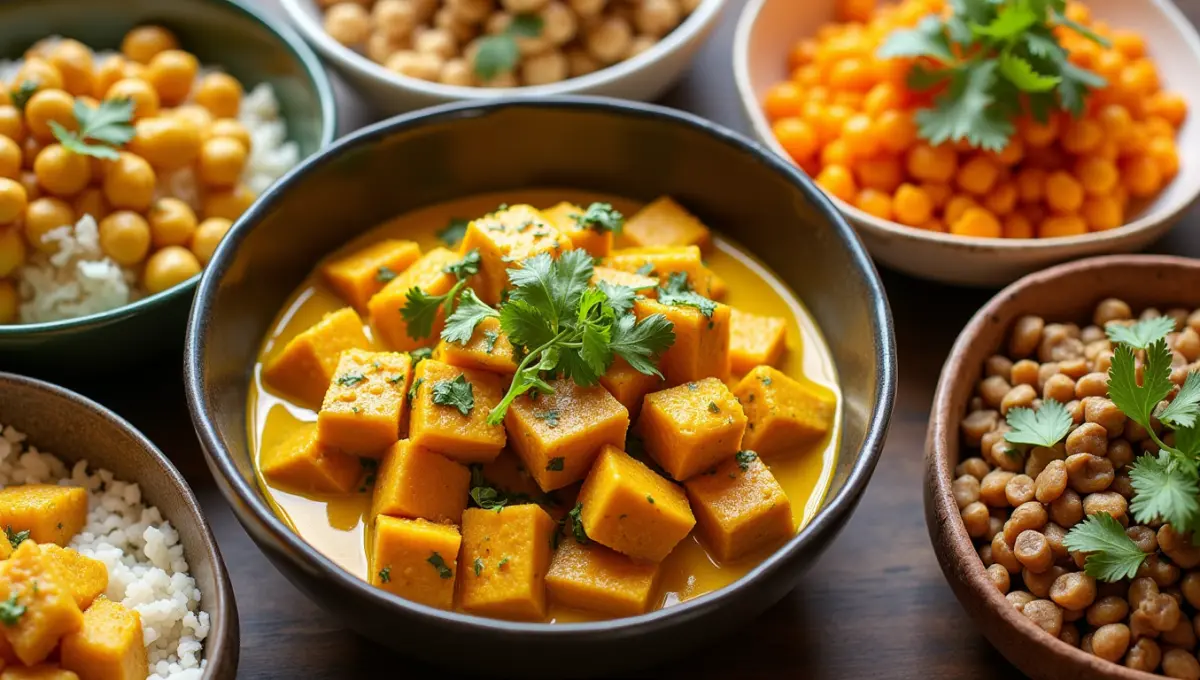
Explore these creative and comforting ways to enjoy golden curry while keeping everything 100% plant-based. Whether you’re cooking for one or meal prepping for the week, there’s a vegan variation here for everyone.
1. Golden Curry with Tofu and Broccoli
A simple, protein-packed version of golden curry that pairs crispy tofu with tender broccoli florets.
Key ingredients:
Firm tofu
Broccoli
Onion and garlic
Vegan golden curry roux
Coconut milk
Why it’s comforting: The combination of creamy curry and savory tofu makes this a filling, nutrient-rich choice.
Optional tip: For extra texture, pan-fry the tofu before adding it to the curry.
2. Chickpea & Sweet Potato Golden Curry
This cozy combo brings sweetness and heartiness together in one bowl.
Key ingredients:
Chickpeas
Sweet potatoes
Carrots
Onion
Vegan golden curry block
Why it’s comforting: Sweet potatoes and chickpeas create a naturally rich texture with plant-powered satisfaction.
Optional tip: This variation reheats beautifully and makes great leftovers.
3. Instant Pot Vegan Golden Curry
For busy days, this version simplifies everything using just one device.
Key ingredients:
Mixed vegetables (carrots, potatoes, peas)
Vegan curry roux
Coconut milk
Chickpeas or tofu
Why it’s comforting: All ingredients cook together fast, locking in deep curry flavor.
Optional tip: Use the sauté function first for best flavor before pressure cooking.
4. Coconut Milk & Cauliflower Curry
A light yet creamy dish perfect for a midweek dinner.
Key ingredients:
Cauliflower
Coconut milk
Vegan curry paste or block
Onion and garlic
Spinach (optional)
Why it’s comforting: Cauliflower soaks up the curry sauce, while coconut milk keeps it silky.
Optional tip: Add spinach at the end for an extra nutrient boost. For another cauliflower dish, try this vegan green bean casserole recipe with a creamy twist.
5. Golden Lentil Curry
A protein-rich option made with red lentils for a hearty meal.
Key ingredients:
Red lentils
Onion, garlic, ginger
Coconut milk
Curry spices or golden curry block
Why it’s comforting: Lentils create a thick, stew-like texture that’s ideal for chilly days.
Optional tip: Great for batch cooking and freezing.
6. Spicy Vegan Golden Curry
Turn up the heat with added spices or chili paste for a bold twist.
Key ingredients:
Tofu or tempeh
Potatoes and carrots
Vegan golden curry sauce
Red chili flakes or sriracha
Why it’s comforting: It’s warming and deeply flavorful, ideal for spice lovers.
Optional tip: Adjust spice level gradually to match your taste.
7. One-Pot Golden Curry Stew
A hands-off recipe that comes together easily in one pot.
Key ingredients:
Mixed root vegetables
Chickpeas
Vegan curry roux
Coconut cream or milk
Why it’s comforting: It’s hearty, thick, and full of rustic flavor with minimal cleanup.
Optional tip: Serve with crusty bread or rice for a filling meal. Pair it with this homemade chicken broth guide for a flavorful base if adapting for non-vegan guests.
8. Golden Curry with Quinoa & Greens
A nutrient-dense bowl loaded with fiber and plant-based protein.
Key ingredients:
Quinoa
Kale or Swiss chard
Vegan golden curry base
Tofu or tempeh
Why it’s comforting: The warm curry contrasts perfectly with earthy greens and fluffy quinoa.
Optional tip: Cook quinoa separately and stir it in at the end to maintain texture.
9. Vegan Katsu with Golden Curry Sauce
A Japanese-inspired favorite featuring crispy tofu katsu and rich curry.
Key ingredients:
Breaded tofu (baked or fried)
Vegan golden curry sauce
Steamed rice
Cabbage slaw (optional)
Why it’s comforting: The crispy tofu paired with warm curry sauce is the ultimate plant-based comfort food.
Optional tip: Panko crumbs give the best crispy coating for tofu katsu.
10. Golden Curry Meal Prep Bowls
Perfect for planning ahead while enjoying variety throughout the week.
Key ingredients:
Golden curry base (tofu, vegetables)
Brown rice or jasmine rice
Steamed greens
Pickled onions (optional)
Why it’s comforting: Balanced and flavorful meals that stay fresh for days.
Optional tip: Store in individual airtight containers and reheat gently for best taste.
Tips for the Best Golden Curry Every Time
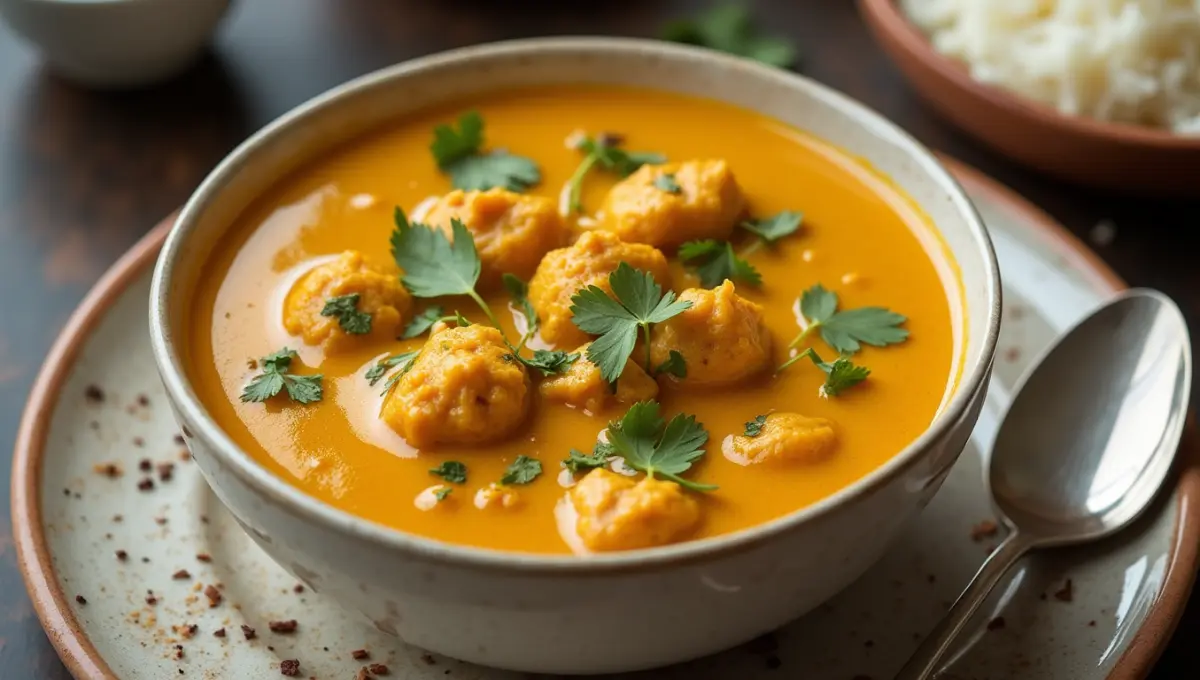
Whether you’re making it for the first time or refining your signature version, these tips will help you get the most out of your golden curry. From simmering to storage, every detail counts when it comes to perfecting flavor and texture in this comforting dish.
1. Simmer for Depth of Flavor
The longer you allow your golden curry to simmer, the more flavorful it becomes. A good minimum is 20 to 30 minutes, but even letting it sit covered off the heat for a few minutes before serving can enhance the taste.
2. Adjust Spice Levels Mindfully
Start with a mild base and build up your spice using chili flakes, hot sauce, or fresh ginger. Since many golden curry blocks are designed to be mild, it’s easy to control the heat to match your taste.
3. Get the Right Thickness
If your golden curry is too thin, let it simmer uncovered to reduce the liquid. If it’s too thick, add a splash of coconut milk or broth to loosen it. The perfect consistency should coat the back of a spoon without running off.
4. Meal Prep for Busy Days
Golden curry is ideal for batch cooking. Make a large pot and divide it into containers for the week. It keeps well in the fridge for up to 4 days and can be frozen for up to 2 months.
5. Reheat Without Drying Out
To reheat leftovers, use a stovetop or microwave on medium heat and add a tablespoon of water or coconut milk to bring back the creamy texture. Stir gently to prevent burning or clumping.
6. Store Sauce and Sides Separately
If possible, store rice, quinoa, or noodles separately from the curry to avoid sogginess. This makes reheating easier and preserves the texture of both elements.
These practical tips will ensure your golden curry turns out flavorful, creamy, and satisfying every single time. For another meal prep-friendly dish, try this high-protein slow cooker recipe to keep your week stress-free.
Serving Suggestions
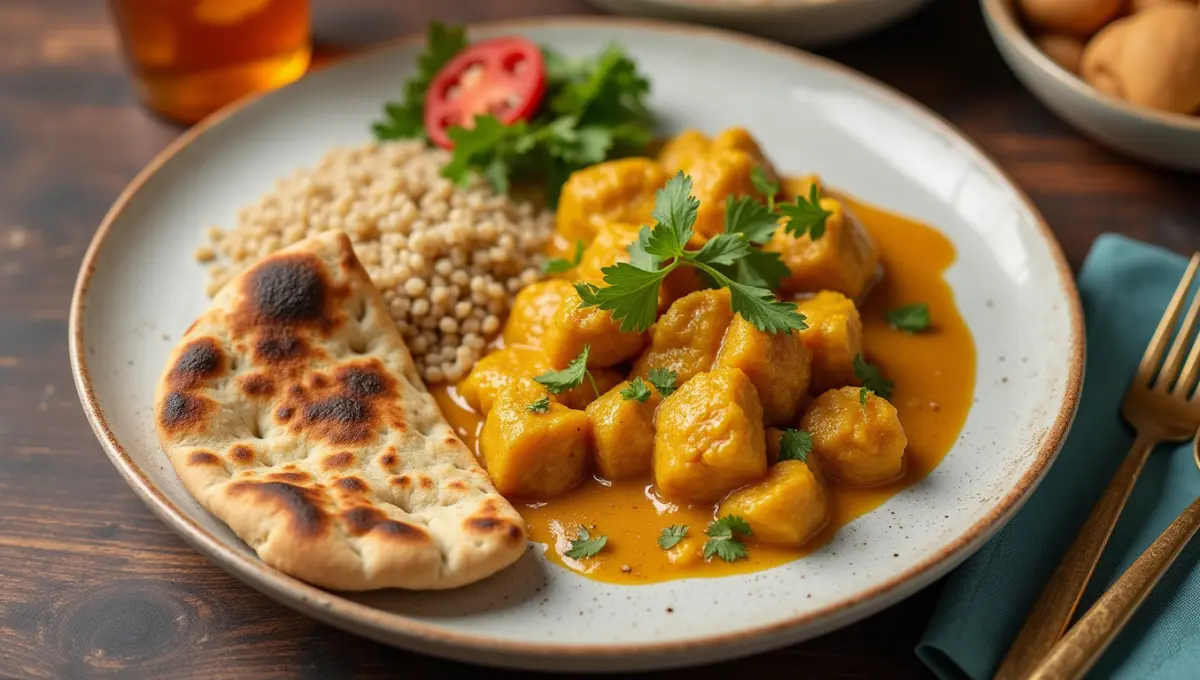
The best part about golden curry is its versatility when it comes to pairing with side dishes. Whether you’re making a simple weeknight dinner or preparing a cozy plant-based meal, there are several delicious options to complement your golden curry. Here are a few serving suggestions to elevate your dish:
1. Steamed Rice
The classic pairing with golden curry is a bed of soft, fluffy steamed rice. Its neutral flavor provides the perfect backdrop for the rich, aromatic curry sauce. Whether you choose white rice, jasmine, or basmati, the rice soaks up the curry beautifully, making each bite satisfying.
2. Quinoa
For a slightly healthier and protein-packed alternative to rice, quinoa is an excellent choice. Its nutty flavor and slightly chewy texture add a wholesome touch to your golden curry. Quinoa also works well in meal prep and as a side for vegan weeknight meals.
3. Naan Bread
Warm, pillowy naan bread is ideal for scooping up every last drop of golden curry. It’s perfect for adding a bit of texture and flavor to each bite, especially when you’re craving something comforting and indulgent. For a homemade bread option, try this sourdough sandwich bread recipe to complement your curry.
4. Fresh Salad
Balance the richness of the golden curry with a refreshing side salad. A crisp cucumber and tomato salad, lightly dressed with olive oil, lemon juice, and herbs, can help cut through the creaminess of the curry, offering a fresh contrast. Add some greens like spinach or arugula for extra nutrition.
5. Roasted Vegetables
Roasted cauliflower, zucchini, or eggplant bring out the natural sweetness of the vegetables and enhance the savory flavors of the curry. These veggies can either be served alongside or stirred into the curry for added texture. For a veggie-packed side, explore this fried squash recipe for a Southern-inspired twist.
6. Vegan Raita
For a cool and creamy contrast, serve your golden curry with a side of vegan raita. Made with plant-based yogurt, cucumber, and mint, this refreshing condiment helps balance the heat and spice in your curry. For another creamy dip, check out this vegan hidden valley ranch dip recipe to keep things versatile.
Each of these serving options makes your golden curry feel like a complete and satisfying meal, perfect for cozy plant-based dishes that everyone will love.
Storage and Meal Prep Tips
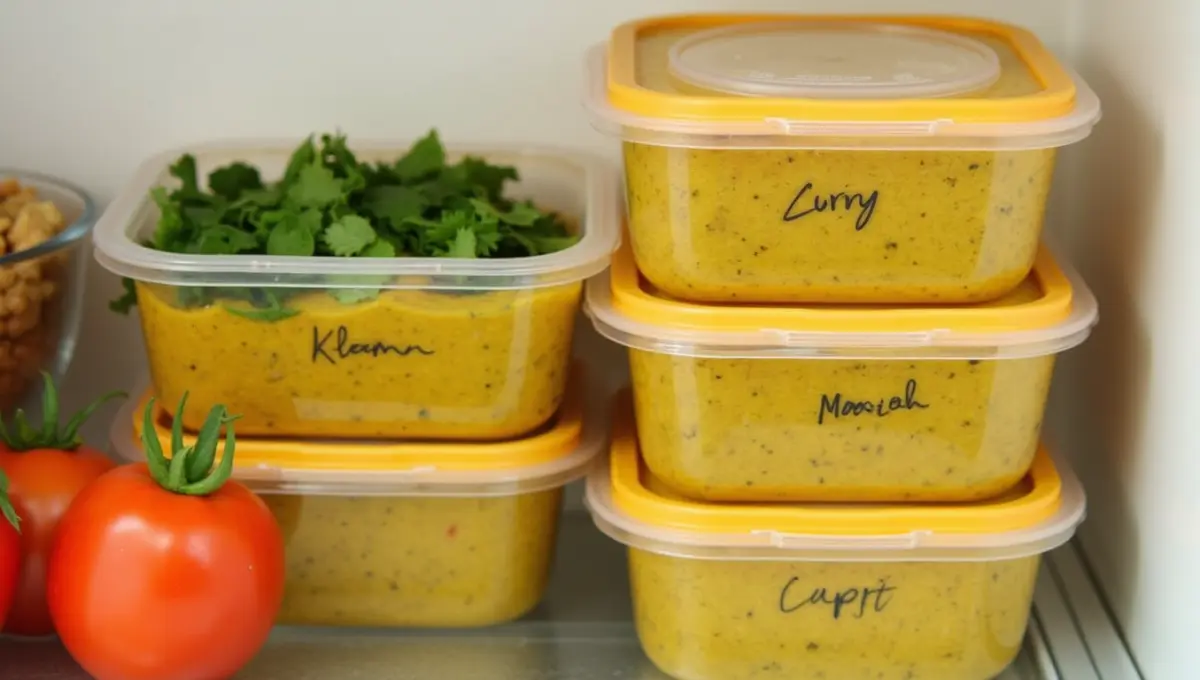
One of the best things about golden curry is how well it stores and reheats, making it an ideal option for vegan meal prep. Whether you’re making a large batch or have leftovers to save, here are some essential tips for storing and preparing your golden curry in advance.
1. Storing in the Fridge
If you’re planning to eat your golden curry within a few days, it can be stored in the refrigerator. Allow the curry to cool to room temperature before transferring it to an airtight container. It will keep fresh for up to 4 days in the fridge.
2. Freezing for Long-Term Storage
For longer storage, golden curry freezes exceptionally well. Let the curry cool completely before portioning it into freezer-safe containers or heavy-duty freezer bags. It will keep in the freezer for up to 2 months. When you’re ready to eat it, simply defrost overnight in the fridge and reheat on the stovetop or microwave.
3. Best Containers to Use
4. Great for Vegan Meal Prep
Golden curry is a fantastic addition to any vegan meal prep routine. You can prepare large batches on the weekend and portion them out for the week ahead. Pair it with cooked grains like rice or quinoa in separate containers, or prepare your sides (like salad or naan) separately to keep them fresh. This makes it easy to grab a comforting meal during busy weekdays without sacrificing flavor or nutrition.
5. Reheating Leftovers
When reheating your golden curry, you may notice the sauce thickening over time. To restore its creamy texture, add a splash of water, vegetable broth, or coconut milk and gently reheat on the stove or microwave. Stir frequently to ensure even heating, and be sure to check that it’s heated through completely before serving.
These storage and meal prep tips will help you enjoy golden curry all week long, making it a practical and comforting dish for busy days or batch cooking. For another make-ahead dish, try this vegan pineapple casserole recipe for a sweet and savory option.
FAQs
When it comes to making golden curry, you might have a few questions along the way. Here are answers to some of the most frequently asked questions that will help you perfect your recipe.
1. Can I make golden curry without a roux block?
Yes, you can absolutely make golden curry without a store-bought roux block. While the roux block is a convenient shortcut for thickening and flavoring the curry, you can create a homemade version using ingredients like flour, coconut milk, and curry powder. To do so, sauté a bit of flour with oil or vegan butter to create a roux, then add curry powder and vegetable broth to build the sauce. This alternative method allows you to control the flavor and thickness while keeping the curry completely plant-based.
2. How do I thicken golden curry?
If your golden curry is too thin, there are several ways to thicken it. One easy method is to let the curry simmer uncovered for a longer period to reduce the liquid. Alternatively, you can add a thickening agent like cornstarch or arrowroot powder (mixed with a little water) to create a thicker consistency. Coconut milk also adds creaminess and helps achieve a rich, smooth texture. For a more rustic approach, you can blend a portion of the vegetables in the curry to naturally thicken the sauce.
3. Is golden curry gluten-free?
Traditional golden curry made with a roux block often contains wheat, making it not gluten-free. However, many brands offer gluten-free golden curry roux options that you can use to keep your dish suitable for those with gluten sensitivities. If you prefer making curry from scratch, you can ensure it’s gluten-free by using a gluten-free flour blend for the roux or thickening with cornstarch. Be sure to check the label of the curry block or paste you choose if you’re aiming for a completely gluten-free meal. For another gluten-free treat, try this gluten-free sugar cookie recipe.
4. What vegetables work best in golden curry?
The beauty of golden curry lies in its versatility with vegetables. You can use a wide variety of vegetables, but some of the best options for a comforting, plant-based dish include:
Sweet potatoes: Their natural sweetness pairs beautifully with the savory curry.
Carrots: They add texture and a touch of sweetness to the dish.
Cauliflower: This vegetable absorbs the flavors of the curry and adds a satisfying bite.
Zucchini: Softens nicely and adds freshness.
Spinach or Kale: These leafy greens work wonderfully for adding extra nutrients and vibrant color to your golden curry.
Feel free to experiment with different combinations based on what you have available! For a veggie-packed dish, check out this stuffed peppers with beans and rice recipe for more inspiration.
These FAQs should help clarify some of the common questions about making golden curry and guide you toward creating the best version for your tastes.
Conclusion
In conclusion, golden curry is a wonderfully versatile and comforting dish that everyone can enjoy, especially when exploring the plant-based variations. Whether you’re making a simple vegan golden curry or experimenting with one of the 10 best golden curry variations, this dish can easily become a weeknight favorite. From tofu and sweet potato to coconut milk and cauliflower, the possibilities are endless, and the flavors are always satisfying.
Not only is golden curry a great way to enjoy a hearty meal, but it’s also an easy, vegan-friendly option for meal prep. You can make large batches, store them for later, and reheat them for quick lunches or dinners, making it perfect for busy days. With so many options for customizing the dish, you’ll never run out of ways to enjoy this comforting, plant-based recipe.
We’d love to hear about your experiences with golden curry! Which variation are you most excited to try? Let us know in the comments below! Don’t forget to share this recipe with friends and family who would love a comforting, plant-based meal. And of course, try one of these golden curry recipes the next time you’re craving something warm and satisfying. For a sweet finish, whip up this apple coffee cake recipe to round out your meal.


4 thoughts on “Golden Curry Recipe: 10 Best Vegan Comfort Dishes”